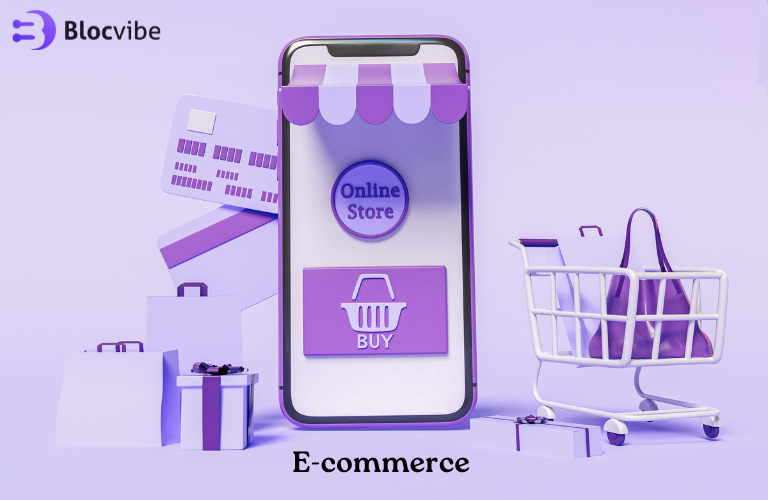E-commerce, or electronic commerce, refers to the buying and selling of goods and services over the internet. It has become an integral part of modern business, revolutionizing the way consumers shop and businesses operate. In this article, we’ll explore the evolution of e-commerce and the trends that are shaping online retail websites today.
Historical Perspective
E-commerce has come a long way since its inception. From the early days of online transactions to the sophisticated platforms we see today, there have been significant milestones in its evolution. Technological advancements have played a crucial role in driving this evolution, making it easier and more convenient for consumers to shop online.
Mobile Commerce (M-Commerce)
With the proliferation of smartphones and tablets, mobile commerce has emerged as a dominant force in the e-commerce landscape. Consumers now have the flexibility to shop anytime, anywhere, using their mobile devices. Mobile shopping apps have become increasingly popular, offering a seamless and intuitive shopping experience on the go.
Personalization and Customer Experience
One of the key trends shaping e-commerce is the focus on personalization and customer experience. Retailers are leveraging data and analytics to tailor shopping recommendations and create customized user interfaces. This personalized approach not only enhances the shopping experience but also fosters customer loyalty and retention.
Artificial Intelligence (AI) and Machine Learning
AI and machine learning are revolutionizing e-commerce by enabling retailers to automate processes and make data-driven decisions. AI-powered chatbots provide instant customer support, while predictive analytics help businesses anticipate customer behavior and preferences. AI-driven personalized marketing campaigns are also becoming increasingly common, delivering targeted messages to individual customers based on their past interactions and preferences.
Augmented Reality (AR) and Virtual Reality (VR)
AR and VR technologies are transforming the way consumers shop online by offering immersive and interactive experiences. Retailers are using AR and VR to create virtual try-on features, allowing customers to visualize products in their own environment before making a purchase. These technologies are also being used to create virtual shopping experiences, where customers can explore virtual stores and interact with products in a lifelike manner.
Voice Commerce
Voice commerce, or v-commerce, is another emerging trend in e-commerce. With the rise of voice-activated assistants like Amazon Alexa and Google Assistant, consumers can now shop using their voice commands. Retailers are integrating voice commerce capabilities into their websites and mobile apps, enabling customers to place orders, track shipments, and make payments using voice commands.

Social Commerce
Social media platforms have become powerful channels for e-commerce, with millions of users engaging with brands and making purchases directly through social media channels. Retailers are leveraging social commerce by creating shoppable posts and stories, allowing customers to discover and purchase products without leaving their favorite social media platforms.
Sustainable E-Commerce
As consumers become more environmentally conscious, sustainable e-commerce practices are gaining traction. Retailers are adopting eco-friendly packaging initiatives, sourcing products from sustainable suppliers, and reducing their carbon footprint. Sustainable brands are also gaining popularity among consumers who prioritize ethical and environmentally friendly products.
Blockchain Technology in E-Commerce
Blockchain technology has the potential to revolutionize e-commerce by providing a secure and transparent platform for transactions. Retailers are exploring blockchain solutions for supply chain management, product authentication, and payment processing. Blockchain technology offers enhanced security, reduced transaction costs, and increased trust and transparency in e-commerce transactions.
Payment Innovations
Payment innovations are driving e-commerce growth by making it easier and more convenient for consumers to make purchases online. Contactless payments, digital wallets, and cryptocurrencies are becoming increasingly popular, offering faster and more secure payment options for online shoppers. Retailers are also focusing on creating seamless checkout experiences to reduce cart abandonment and improve conversion rates.
Subscription-Based Models
Subscription-based models are changing the way consumers access products and services online. From subscription boxes to streaming services, consumers are increasingly opting for subscription-based offerings that offer convenience, value, and personalized experiences. Retailers are capitalizing on this trend by offering subscription-based services that cater to specific customer needs and preferences.
Cross-Border E-Commerce
Cross-border e-commerce is on the rise, as retailers look to expand their reach and tap into new markets around the world. With advances in logistics and technology, it’s easier than ever for businesses to sell products internationally. However, cross-border e-commerce comes with its own set of challenges, including currency conversion, customs regulations, and language barriers.
Influencer Marketing
Influencer marketing has emerged as a powerful tool for e-commerce brands looking to reach new audiences and drive sales. By partnering with influencers, brands can leverage their social media following and credibility to promote products and services to a targeted audience. Influencer marketing campaigns can be highly effective in driving brand awareness, engagement, and conversions.
Data Privacy and Security
Data privacy and security are top concerns for e-commerce businesses and consumers alike. With the increasing volume of personal data being collected and stored online, retailers must take steps to protect customer information from data breaches and cyber attacks. Implementing robust security measures and complying with data privacy regulations are essential for building trust and confidence among online shoppers.
The Future of E-Commerce
Looking ahead, the future of e-commerce looks promising, with continued innovation and evolution shaping the industry. Emerging technologies like AI, AR, and blockchain will continue to drive growth and transformation in e-commerce, offering new opportunities for retailers to engage with customers and deliver seamless shopping experiences. As consumer preferences and behaviors continue to evolve, e-commerce businesses must stay agile and adaptable to thrive in an ever-changing landscape.
Conclusion
In conclusion, the evolution of e-commerce is a testament to the power of technology and innovation in reshaping the way we shop and do business online. From mobile commerce and personalization to blockchain technology and influencer marketing, the trends shaping online retail websites are diverse and dynamic. By embracing these trends and staying ahead of the curve, e-commerce businesses can position themselves for success in the digital age.




